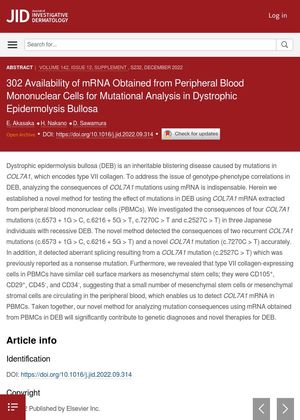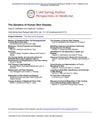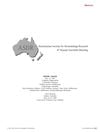Availability of mRNA from Peripheral Blood Mononuclear Cells for Mutational Analysis in Dystrophic Epidermolysis Bullosa
November 2022
in “
Journal of Investigative Dermatology
”

TLDR Scientists developed a new way to study mutations in a skin condition using blood cells, which may help diagnose and treat the disease.
The study established a new method for analyzing the effects of mutations in Dystrophic epidermolysis bullosa (DEB) using COL7A1 mRNA extracted from peripheral blood mononuclear cells (PBMCs). The method was tested on four COL7A1 mutations in three Japanese individuals with recessive DEB. The results accurately detected the consequences of two recurrent and one novel COL7A1 mutations, and identified aberrant splicing from a mutation previously reported as a nonsense mutation. The study also found that type VII collagen-expressing cells in PBMCs have similar cell surface markers as mesenchymal stem cells, suggesting that a small number of these cells are circulating in the peripheral blood, enabling the detection of COL7A1 mRNA in PBMCs. This new method could significantly contribute to genetic diagnoses and novel therapies for DEB.


